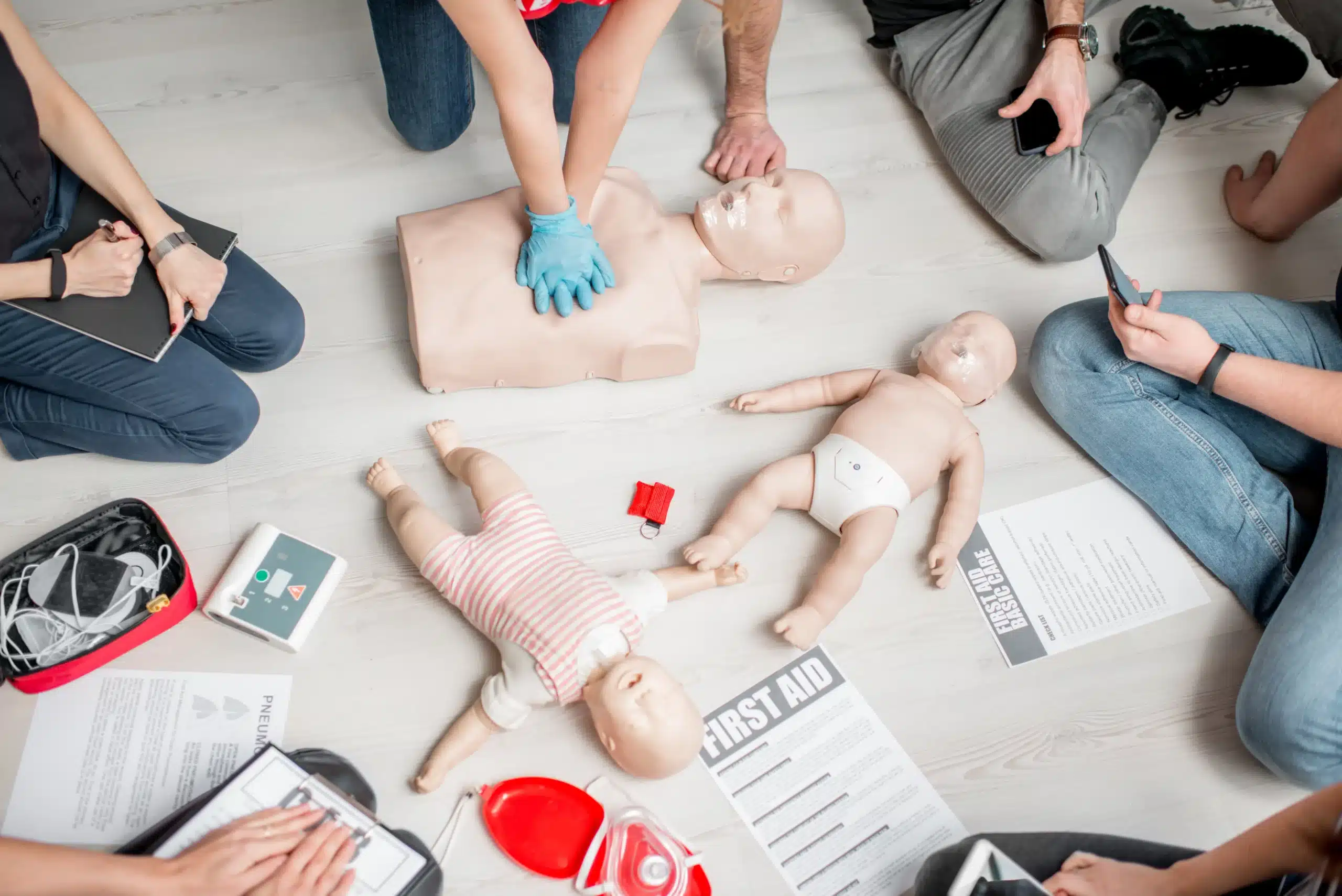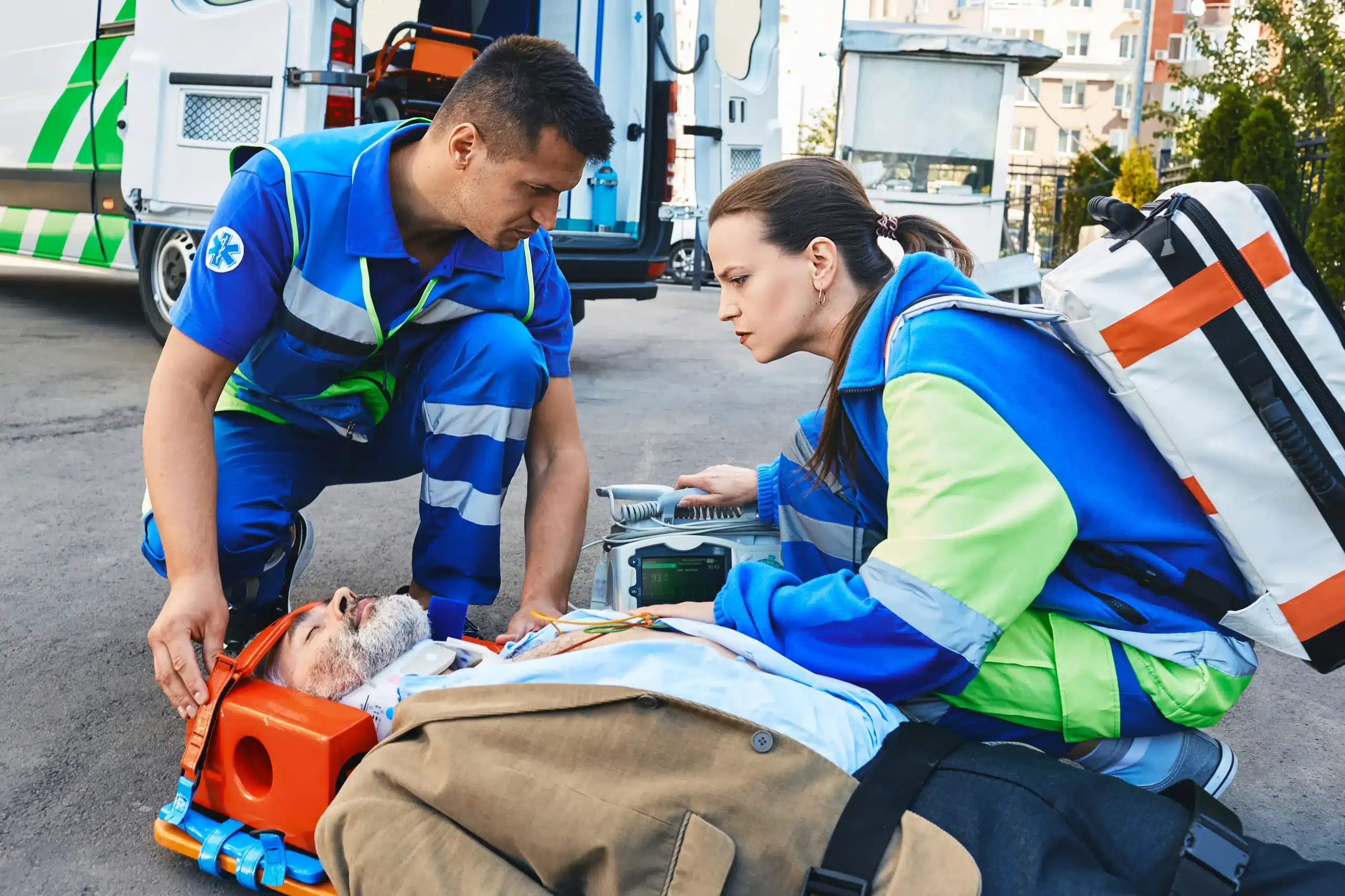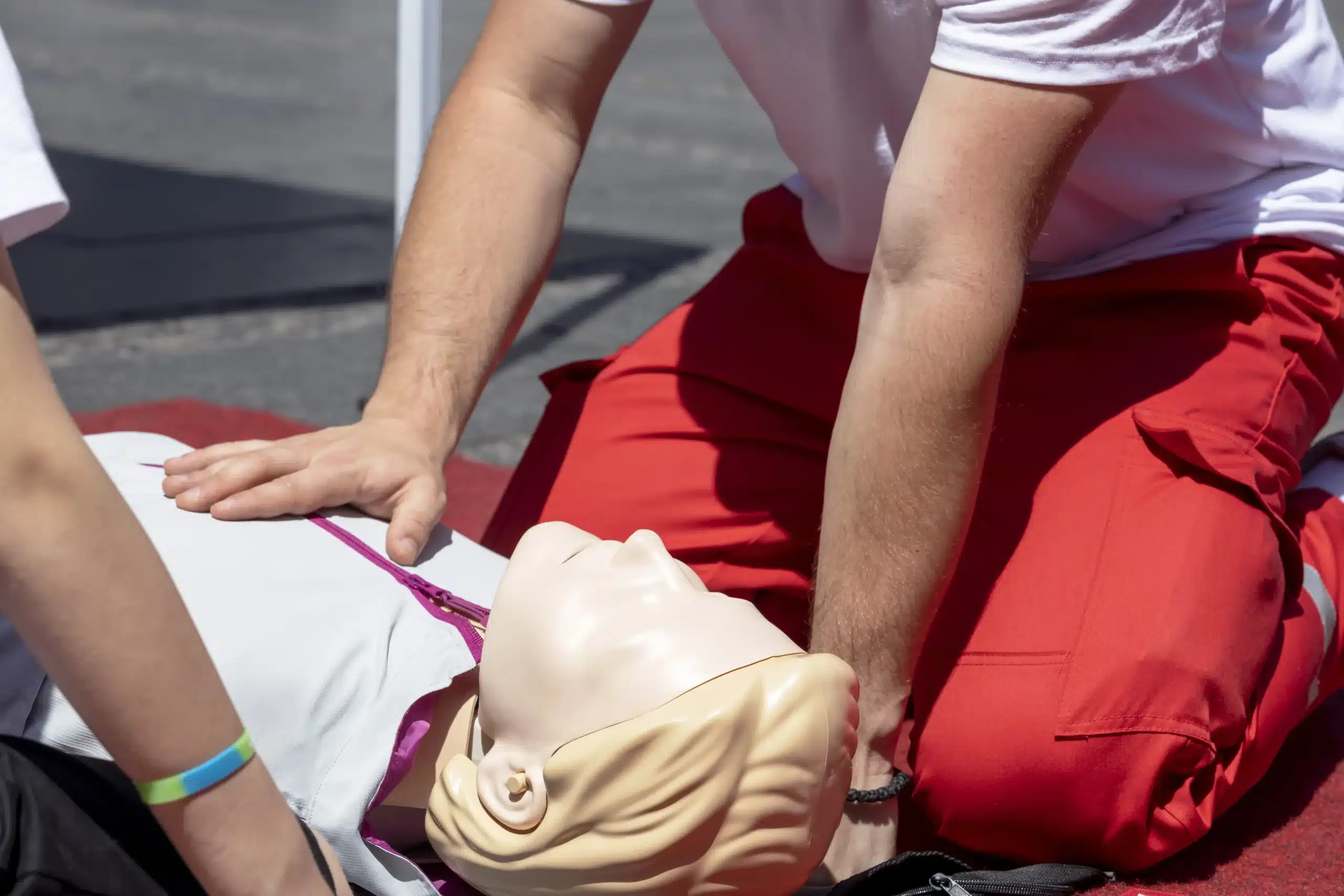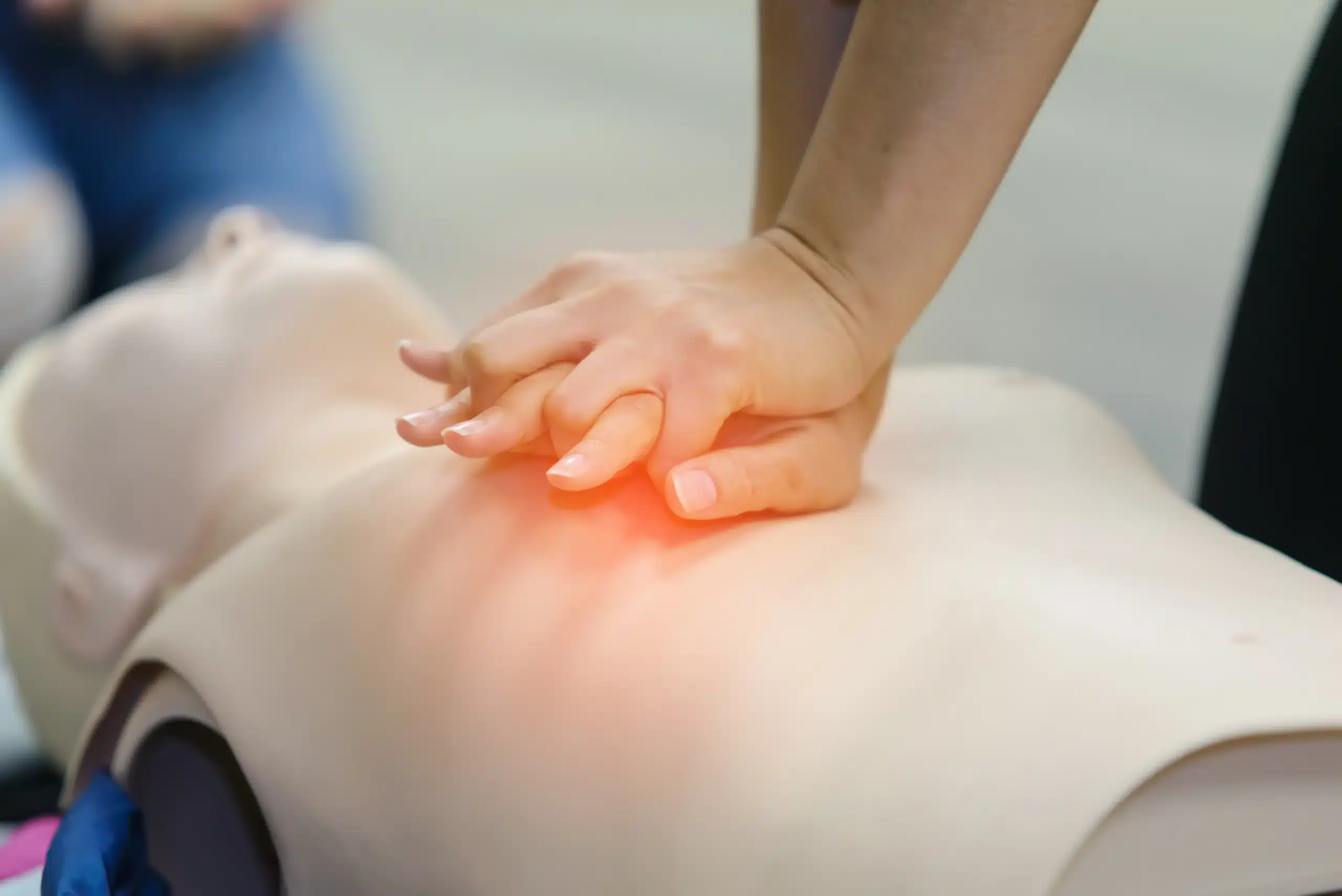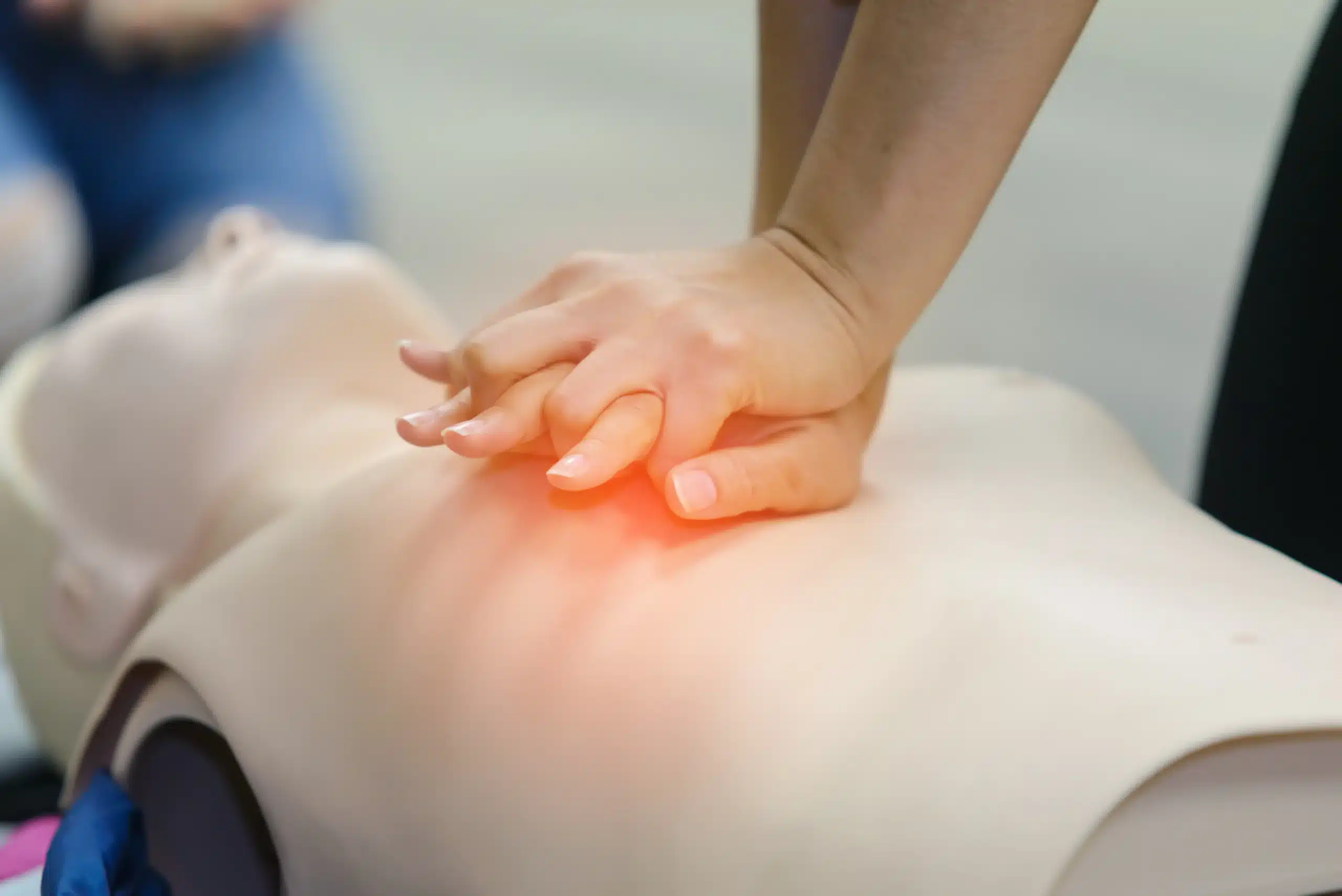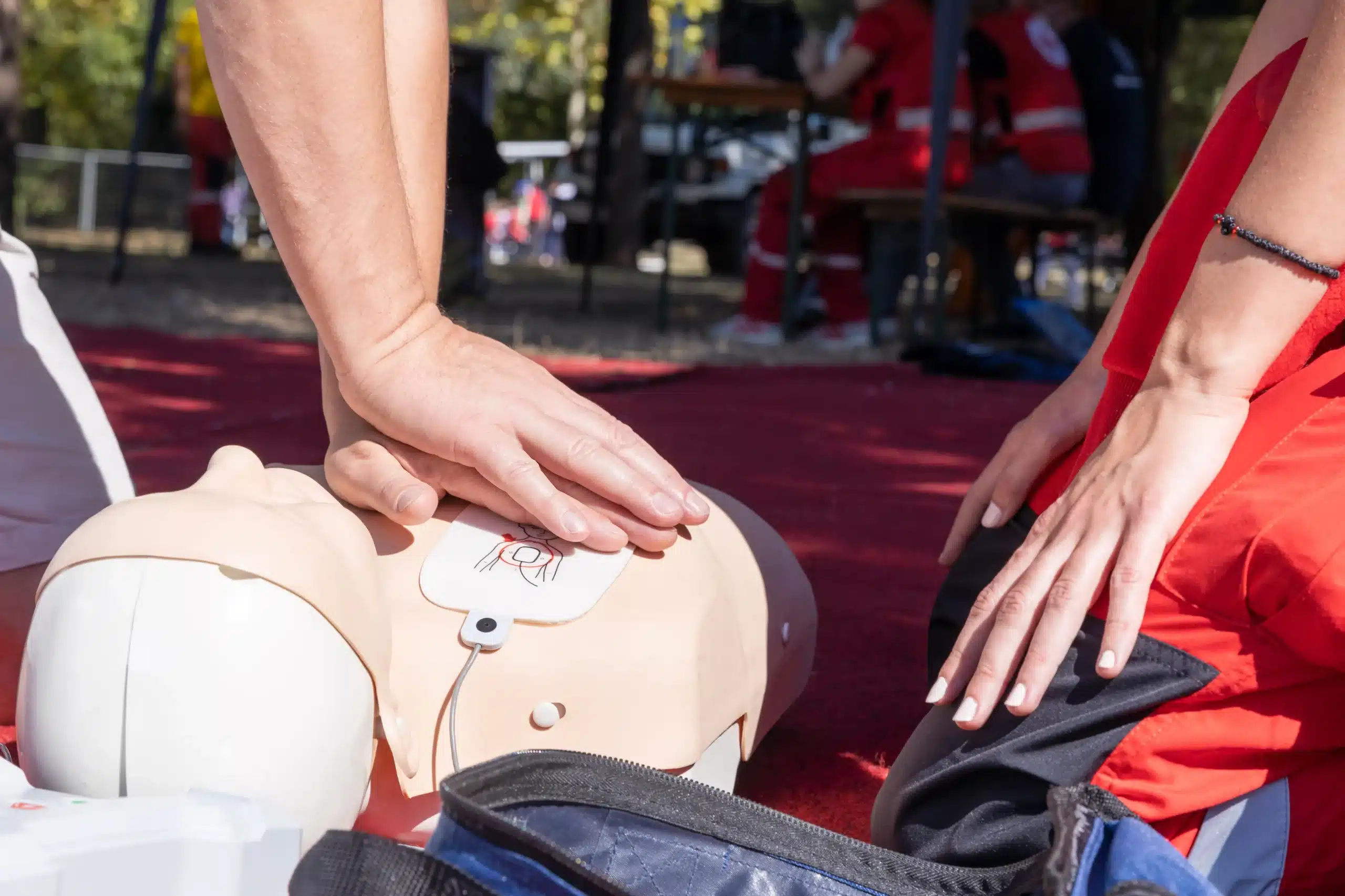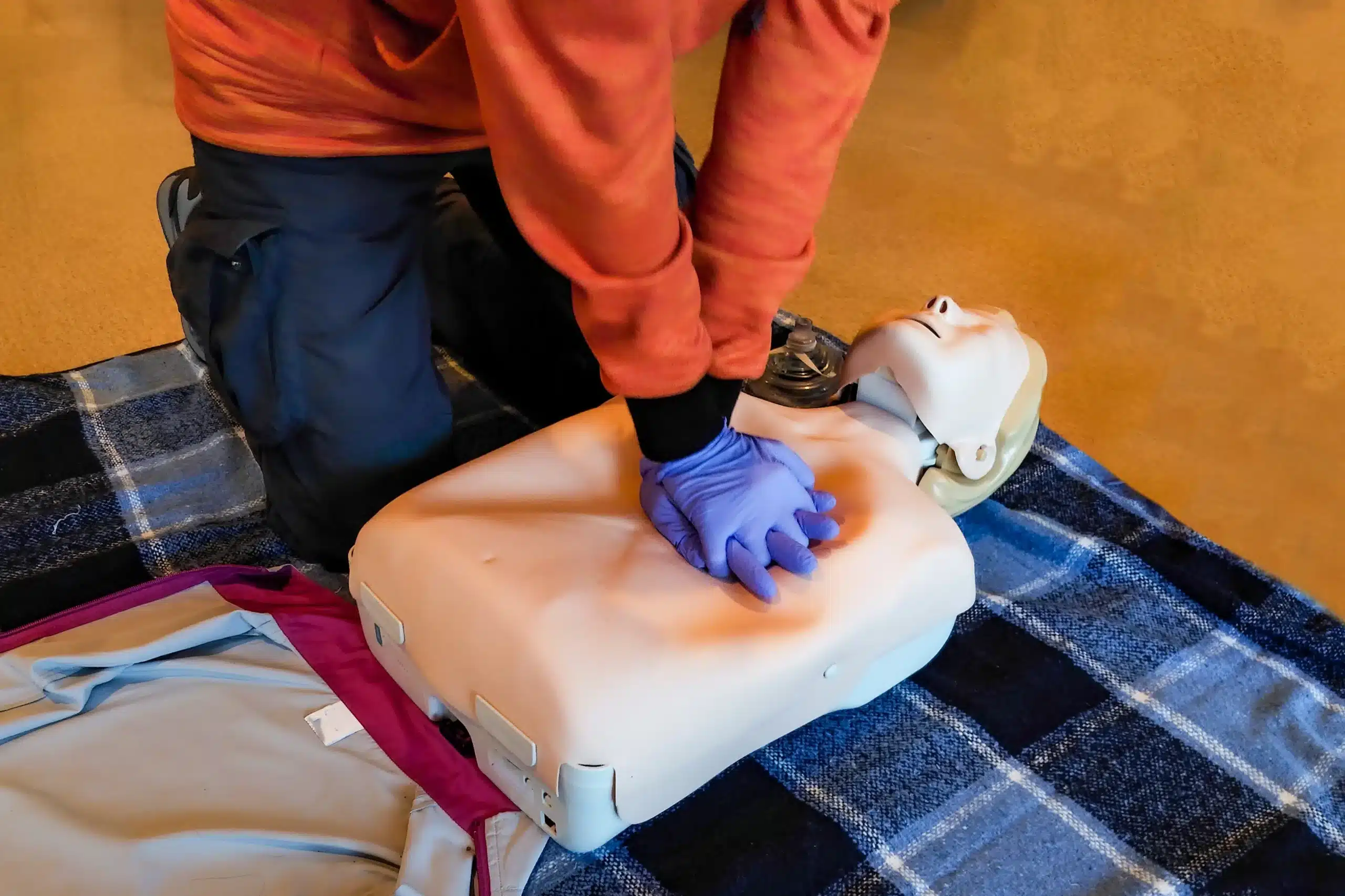Empowering yourself with life-saving skills has never been easier, thanks to the increasing availability of CPR training free resources. This post is your guide to navigating the world of free CPR training, from finding reputable providers to understanding what to expect from these courses. We’ll delve into the benefits of learning CPR, whether you’re seeking personal enrichment or professional development. We’ll also discuss how free CPR training contributes to a safer and more prepared community. Join us as we explore how CPR training free options can empower you to make a difference.
Key Takeaways
- Free CPR training empowers you to save lives. Find convenient online or in-person courses offered by organizations like the American Red Cross and local fire departments. Reinforce your skills with supplementary online resources and regular practice.
- Choose the learning format that fits your lifestyle. Online training offers flexibility, while in-person classes provide hands-on practice. Consider your learning style and schedule when making your decision.
- Certification enhances your skills and opens doors. While free training provides essential knowledge, formal certification demonstrates proficiency and can be a requirement for certain jobs. Explore affordable certification options to boost your career prospects.
What is CPR and Why is it Important?
Cardiopulmonary resuscitation (CPR) is a life-saving technique used when someone’s breathing or heartbeat has stopped. This can happen during a heart attack, near-drowning, or other medical emergencies. CPR involves chest compressions and rescue breaths that circulate blood and oxygen to the brain and other vital organs. Think of it as manually taking over for the heart and lungs, keeping the body alive until professional medical help arrives. Learning CPR empowers you to take immediate action in a crisis.
Why is it so important? It can dramatically increase the chances of survival. Studies show that effective bystander CPR can double or even triple a victim’s odds of surviving cardiac arrest. Those first few minutes are absolutely crucial. CPR training empowers you to make a difference when it matters most. It’s a skill anyone can learn, regardless of age or background. Check out some of the common myths about learning CPR to see how accessible it is. Consider taking a CPR class—it’s an investment in your ability to help others and could one day save someone you love. You can find more information on CPR myths and truths from resources like CPR Guardians.
Where to Find Free CPR Training
Knowing CPR can empower you to save a life in a critical situation. Thankfully, several organizations offer free CPR training, making these essential skills accessible to everyone. Here are some places to explore:
American Red Cross
The American Red Cross frequently offers CPR classes and certifications across the country. While not all their courses are free, they often provide free CPR training events and resources, especially for specific community groups or during awareness campaigns. Check your local Red Cross chapter for classes in your area.
National Healthcare Provider Solutions (NHCPS)
NHCPS offers a completely free online Basic Life Support (BLS) course. This accessible format allows you to learn at your own pace. While the course itself is free, keep in mind that obtaining an official BLS certification through them involves an additional cost.
AED CPR
AED CPR provides free CPR classes with the option to pursue certification later. This flexible approach lets you acquire the fundamental skills without any initial financial commitment. Explore their website for information on their free CPR and first aid classes.
Local Fire Departments
Your local fire department can be a valuable resource for free CPR training. Many fire departments offer free classes to community members as part of their public safety initiatives. Contact your local fire department or check their website for CPR training schedules. This is a great way to learn essential skills and connect with your community’s first responders.
American Heart Association
The American Heart Association (AHA) sometimes offers free CPR training events, particularly during CPR and AED Awareness Week. While their standard certification courses typically come with a fee, they often partner with community organizations to provide free training opportunities. Check the AHA website for announcements about free training events.
Palo Alto CPR Classes
At Palo Alto CPR Classes, we understand the importance of accessible training. While our comprehensive certification courses—including BLS, ACLS, and RQI—are offered at competitive rates with a low price guarantee, we also believe in empowering our community with life-saving knowledge. We encourage you to explore the free options mentioned above and contact us if you have any questions about CPR training or would like to learn more about our affordable group discounts.
What Will You Learn in Free CPR Training?
Free CPR training equips you with essential life-saving skills, but the specific curriculum can vary based on the provider. Generally, these courses cover a range of techniques designed to prepare you for various emergency situations. Here’s a glimpse of what you can expect to learn:
Basic Life Support Techniques
This core component of CPR training teaches you the fundamentals of cardiopulmonary resuscitation. You’ll learn how to perform chest compressions and rescue breaths—the crucial combination that keeps blood circulating and oxygen flowing to the brain during cardiac arrest. Free CPR courses often emphasize recognizing the signs of a heart attack and responding quickly. Many courses, like those offered by Pulsestart CPR, aim to debunk common CPR myths and build participant confidence.
AED Usage
Automated External Defibrillators (AEDs) are life-saving devices that can restore a normal heart rhythm during sudden cardiac arrest. Free CPR training often includes instruction on properly using an AED. You’ll learn how to assess the situation, apply the AED pads, and follow the device’s voice prompts. Understanding AED operation is a vital skill that can significantly improve a person’s chances of survival. Providers like NHCPS integrate AED training into their free BLS course.
Choking Response Protocols
Choking emergencies can occur unexpectedly, and knowing how to react quickly can save a life. Free CPR training typically covers choking response protocols, including the Heimlich maneuver for adults, children, and infants. You’ll learn how to recognize the signs of choking and perform the appropriate techniques to dislodge the obstruction. Resources like AED CPR offer free training that includes these essential choking rescue techniques.
Assessing Emergency Situations
Effective emergency response begins with a clear assessment of the situation. Free CPR training often emphasizes recognizing when intervention is necessary. You’ll learn how to evaluate the scene, identify potential dangers, and prioritize actions. This includes checking for responsiveness, assessing breathing and circulation, and activating emergency medical services. USCPR Online highlights the importance of assessing emergency situations. Learning how to quickly and accurately assess a situation can dramatically affect the outcome.
Online vs. In-Person Free CPR: Which is Right for You?
Choosing between online and in-person CPR training depends on your learning style, schedule, and goals. Both options offer valuable instruction, but they differ in a few key areas. Let’s explore the pros and cons of each to help you decide which path suits you best.
Learning Flexibility and Accessibility
Online CPR training excels in flexibility. Platforms like AED CPR and USCPR Online offer free courses that let you learn at your own pace, anytime, anywhere. This self-paced learning is ideal for busy individuals juggling work, family, or other commitments. You can revisit modules, pause lessons, and fit the training around your existing schedule. In-person classes offer a structured learning environment but often require adhering to set schedules and locations, which can be challenging for those with less flexible schedules. However, this structure can also motivate some learners. Consider what works best for your learning style and availability.
Hands-on Practice Opportunities
One of the main differences between online and in-person training is the hands-on experience. In-person classes provide invaluable opportunities to practice CPR techniques on training mannequins, as highlighted by Emergency First Response. This physical practice helps develop muscle memory and confidence in performing compressions and rescue breaths. Having an instructor present to provide real-time feedback is essential for correcting technique and ensuring you’re performing CPR effectively. Some in-person courses, like those offered by the City of Sandy Springs, even include practice kits to enhance hands-on learning. While online courses may offer videos and simulations, they can’t fully replicate the tactile experience of performing CPR on a mannequin.
Comparing Effectiveness
Both online and in-person CPR training can be effective, but ProTrainings research suggests online learning can be surprisingly effective due to its flexibility and adaptability. Learning at your own pace and revisiting material as needed can improve knowledge retention. However, the effectiveness of either method depends on the individual learner’s engagement and commitment to practicing the skills learned. If you choose online training, consider supplementing it with hands-on practice. If you choose an in-person class, actively participate and ask questions to maximize your learning. At Palo Alto CPR Classes, we offer in-person training that prioritizes hands-on learning and personalized instruction. Our American Heart Association BLS course is a great option for those seeking certification.
Getting Certified After Free CPR Training
So, you’ve taken advantage of free CPR training—fantastic! You’ve learned essential life-saving skills. But what if you need official certification? This section covers how to get certified, especially through the American Heart Association, after completing free CPR training.
American Heart Association Certification
The American Heart Association (AHA) offers a wealth of resources, including some free training materials. These free resources are a great way to get familiar with CPR basics. However, if you need official AHA certification, you’ll need to enroll in one of their certification courses. These courses are available both online and in person, offering flexibility for various learning styles. Check out our page on American Heart Association BLS for more information on how to get certified.
Basic Life Support (BLS) Certification
BLS certification goes a step further than basic CPR training, providing a more in-depth understanding of life support techniques. While you might find free introductory BLS courses, obtaining the actual BLS certification usually involves a fee. This certification is often a requirement for healthcare professionals and those in related fields. It’s an accredited and internationally recognized credential, demonstrating your commitment to high-quality CPR skills. We offer BLS certification courses at Palo Alto CPR Classes, ensuring you receive comprehensive training and obtain a valuable certification. For those interested in further training, our ACLS and PALS courses provide advanced life support training.
Costs and Processes
Free CPR training is an excellent starting point, but remember that official certification often comes with a cost. This is especially true for BLS certification, which may be necessary for certain jobs or educational programs. Think of the free training as a valuable introduction, preparing you for the more comprehensive certified course. If you’re looking for affordable options, check out our low price guarantee and group discounts at Palo Alto CPR Classes. We also offer convenient RQI classes for those seeking an alternative certification path. We’re committed to making life-saving training accessible to everyone.
Benefits of Free CPR Training
Free CPR training offers a wealth of benefits, empowering you to make a real difference in critical situations. From building essential skills to boosting your career prospects, the advantages are numerous. Let’s explore some key ways free CPR training can positively impact your life and your community.
Learn Life-Saving Skills
Free CPR training equips you with fundamental life-saving techniques. You’ll learn how to perform CPR effectively, including chest compressions and rescue breaths. These courses also cover using an automated external defibrillator (AED), a critical device that can restore a normal heart rhythm during sudden cardiac arrest. Additionally, you’ll gain skills in relieving choking and administering basic first aid for various situations, from minor cuts to more serious injuries. These comprehensive courses often align with American Heart Association guidelines, ensuring you receive high-quality instruction. Free CPR courses cover essential skills like CPR, AED usage, and basic first aid.
Gain Confidence in Emergencies
One of the most valuable outcomes of free CPR training is the confidence it instills. Knowing how to respond effectively in a medical emergency can be truly empowering. Quality training dispels common misconceptions about CPR, giving you the knowledge and assurance to act swiftly and decisively when every second counts. This preparedness can make all the difference in helping someone survive a life-threatening event. Addressing common myths about CPR helps empower individuals to contribute in emergencies. Learn more about common CPR myths and how training can build your confidence here.
Contribute to Community Safety
By learning CPR, you become an invaluable asset to your community. You’ll be prepared to assist family, friends, coworkers, or even strangers in times of need. Free CPR training initiatives contribute significantly to community safety nets. The more people equipped with these skills, the greater the chances of positive outcomes during medical emergencies. Your training can be the link between a life-threatening incident and a life saved. Explore how CPR training strengthens community safety here.
Advance Your Career
Free CPR training can also enhance your career prospects. Many professions, from healthcare and childcare to education and fitness, require or highly recommend CPR certification. While the training itself may be free, you can often obtain certification for a nominal fee. This certification demonstrates your commitment to safety and preparedness, making you a more desirable candidate for various roles. Even if not strictly required, having CPR training on your resume can set you apart from other applicants and open doors to new opportunities. Learn more about obtaining CPR certification after completing free training.
Debunking Myths About Free CPR Training
Free CPR training sometimes gets a bad rap. Let’s clear up some common misconceptions and separate fact from fiction. Free CPR training can be a valuable resource, especially when you understand its benefits and limitations.
Quality Concerns
One of the biggest myths surrounding free CPR training is that it’s subpar. Some people worry that free courses won’t cover the material thoroughly or provide quality instruction. This isn’t necessarily true. Many reputable organizations offer free CPR training that meets the same standards as paid courses. The key is to find a reputable provider. Look for organizations like the Red Cross or your local fire department that are known for their commitment to high-quality training. For example, resources like CPR Guardians emphasize that quality training programs equip individuals with the knowledge to perform CPR safely and effectively.
Certification Validity
Another misconception is that free CPR training doesn’t lead to valid certification. While some free courses might not include certification, many do offer the option to get certified for a small fee. The free training provides the knowledge and skills you need, and then you can decide if you want to pursue certification. AED CPR, for instance, offers free online courses and gives users the option to pay for certification upon completion. This can be a great way to learn the essentials without a large upfront cost. Remember, some employers or schools might require certification, so check their requirements beforehand.
Accessibility and Availability
Finally, there’s a myth that free CPR training is hard to find. In reality, free or low-cost CPR classes are often available in most communities. Check with your local fire department, community centers, or hospitals to see what’s available in your area. Articles like CPR Myths Exposed highlight the accessibility of CPR training, emphasizing that many communities offer free classes. You might be surprised at the number of free opportunities right in your neighborhood. Plus, online resources can supplement in-person training and make learning even more accessible. For example, By Grace CPR Compliance promotes accurate, life-saving knowledge and clarifies common misconceptions about CPR and first aid.
Maximize Your Free CPR Training
So, you’ve taken advantage of free CPR training—fantastic! Now, let’s talk about how to really make that training stick and keep your skills sharp. It’s not just about the initial learning; it’s about ongoing practice and staying up-to-date.
Supplementary Learning Materials
Free online resources can be a game-changer when it comes to reinforcing your CPR knowledge. Sites like AED CPR offer free courses covering essential life-saving techniques like CPR, AED use, and choking relief, all aligned with current industry standards. These resources are like your study buddies, available anytime to help you brush up on key concepts or explore specific techniques in more detail.
Practice at Home
Hands-on practice is essential for building muscle memory and confidence. In a real emergency, you won’t have time to think through every step. Regular practice at home helps you react instinctively. Many online CPR courses, such as those offered by ProTrainings, emphasize the importance of hands-on practice after the initial training. Grab a pillow or a stuffed animal and rehearse the techniques. Even better, practice with a friend or family member and give each other feedback. Use a free study guide to reinforce your learning.
Refresher Courses and Updates
CPR guidelines and best practices can evolve, so staying current is crucial. The American Red Cross offers various recertification options, allowing you to refresh your skills and stay on top of any updates. Even if your initial training was free, many organizations offer affordable recertification. Consider it an investment in your continued ability to help in emergencies. Free resources like AED CPR can also help you stay updated between formal recertification courses.
Tips for Successful Free CPR Training
Free CPR training is a fantastic resource, but like anything worthwhile, it requires effort to truly benefit. These tips can help you make the most of your free CPR training and solidify those life-saving skills.
Set Clear Goals
Before you begin, ask yourself what you want to achieve with this training. Are you looking to feel more confident responding to emergencies? Do you need certification for a job? Having a clear objective, like improving your response time in assessing an emergency situation, will keep you focused and motivated. Setting reasonable expectations, such as mastering chest compressions before moving on to rescue breaths, will help you build competence and confidence. The American Heart Association emphasizes the importance of setting realistic goals in their advice on staying motivated with fitness, a principle that applies equally well to CPR training.
Create a Study Schedule
One of the biggest advantages of free online CPR training is flexibility. You can learn at your own pace and on your own schedule. However, this flexibility can also be a challenge. It’s easy to put off studying if you don’t have a plan. Treat your CPR training like any other important commitment. Block out specific times in your week dedicated to studying, just as you would for a class or meeting. Many free online CPR courses are designed to fit into a busy schedule, allowing you to learn anytime, anywhere.
Engage with Interactive Content
Free CPR training isn’t just about reading text. Look for courses that offer interactive elements like videos, quizzes, and simulations. These tools can make learning more engaging and help you retain information better. Actively participating in these activities, such as practicing chest compressions on a mannequin or taking online quizzes on choking response protocols, will reinforce your learning and build muscle memory. Many websites offer video tutorials and demonstrations that can significantly enhance your understanding of CPR techniques.
Join a CPR Training Community
Learning CPR doesn’t have to be a solitary endeavor. Connecting with others who are also learning or practicing CPR can provide valuable support and motivation. Online forums, study groups, or even just talking to friends and family about your training can create a sense of community and accountability. Sharing your learning journey with others can also inspire them to learn CPR, expanding the network of people equipped to respond to emergencies. Promoting CPR training within your network can create a ripple effect of life-saving knowledge within your community.
How Free CPR Training Improves Community Safety
Free CPR training plays a vital role in strengthening community safety nets. When more people know how to perform CPR, it creates a ripple effect that benefits everyone. Think of it as equipping your community with more potential lifesavers. This widespread knowledge translates to quicker responses in emergencies, ultimately increasing the chances of survival for cardiac arrest victims. Studies show that effective bystander CPR can double or even triple survival rates. Those are powerful odds that underscore the importance of accessible training. Free CPR training empowers individuals to take action rather than stand by during emergencies. This boost in confidence can make all the difference in those critical first few minutes before professional help arrives.
Many communities offer free CPR classes, making it easier than ever to acquire these life-saving skills. Even learning a few basic steps can significantly increase a person’s willingness to help in a crisis. This increased community engagement creates a safer environment for everyone. Beyond individual empowerment, free CPR training serves as a valuable resource for organizations and community groups. It strengthens the overall safety framework by ensuring more people are prepared to respond effectively to medical emergencies. From schools and workplaces to neighborhood watch groups, free CPR training equips communities with the skills they need to handle unexpected situations.
This proactive approach to safety fosters a more resilient and prepared community, ready to face emergencies head-on. It’s about creating a network of support where everyone has the potential to be a first responder and contribute to a safer environment for all. Learning CPR is an investment in your community’s well-being, empowering individuals to make a real difference in life-or-death situations.
Related Articles
- Why CPR is Crucial in Healthcare
- Why CPR is Important in Healthcare – Palo Alto CPR Classes
- CPR Certification in Palo Alto: Your Guide – Palo Alto CPR Classes
- Prioritize Workplace CPR and First-Aid Training for Safety
- Find CPR Courses Near Me: Your Guide to Getting Certified – Palo Alto CPR Classes
Frequently Asked Questions
Is free CPR training as good as paid CPR training?
Free CPR training can be just as comprehensive as paid training, especially for learning the basics. The key is to find a reputable provider like the Red Cross, a local fire department, or a well-regarded online platform. While free courses might not always include certification, they often offer the option to get certified for a small fee after completing the training.
What if I’m nervous about performing CPR in a real emergency?
It’s completely normal to feel apprehensive about using CPR in a real-life situation. That’s why practice is so important. Regular practice builds muscle memory and confidence, allowing you to react instinctively in an emergency. Many free online resources offer videos and simulations to help you practice and visualize different scenarios.
How often do I need to renew my CPR certification?
CPR guidelines and best practices can change, so staying up-to-date is essential. Most certifications are valid for two years. Many organizations offer refresher courses and recertification options, often at a reduced cost. Even if your initial training was free, staying current with your certification ensures you’re always prepared to provide the most effective care.
What if I don’t have time for a full CPR class?
Free online CPR training is a great option for busy schedules. Many online platforms offer flexible, self-paced courses that you can fit around your other commitments. You can learn anytime, anywhere, and revisit modules as needed. Even if you ultimately pursue in-person certification, online resources can be a great way to get started and learn the basics.
How can I find free CPR training near me?
Start by checking with your local fire department, community centers, hospitals, or even workplaces. Many organizations offer free CPR training as a community service. You can also search online for free CPR training resources in your area. The Red Cross and the American Heart Association are excellent resources for finding training opportunities.
